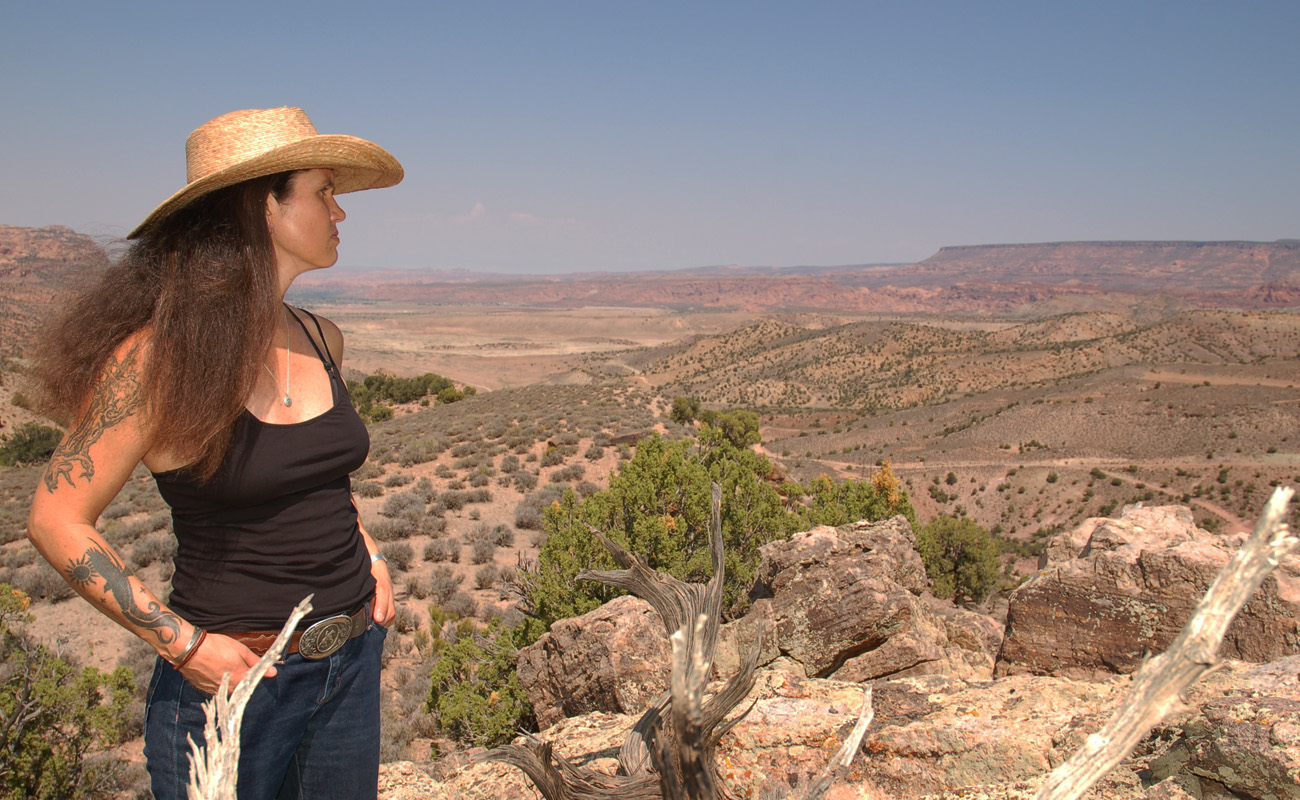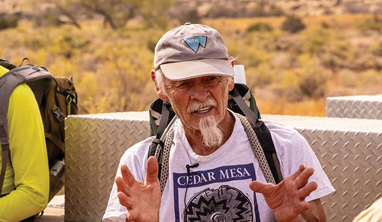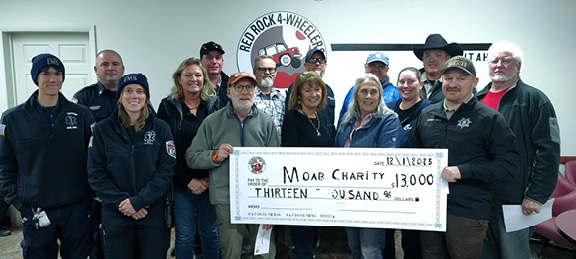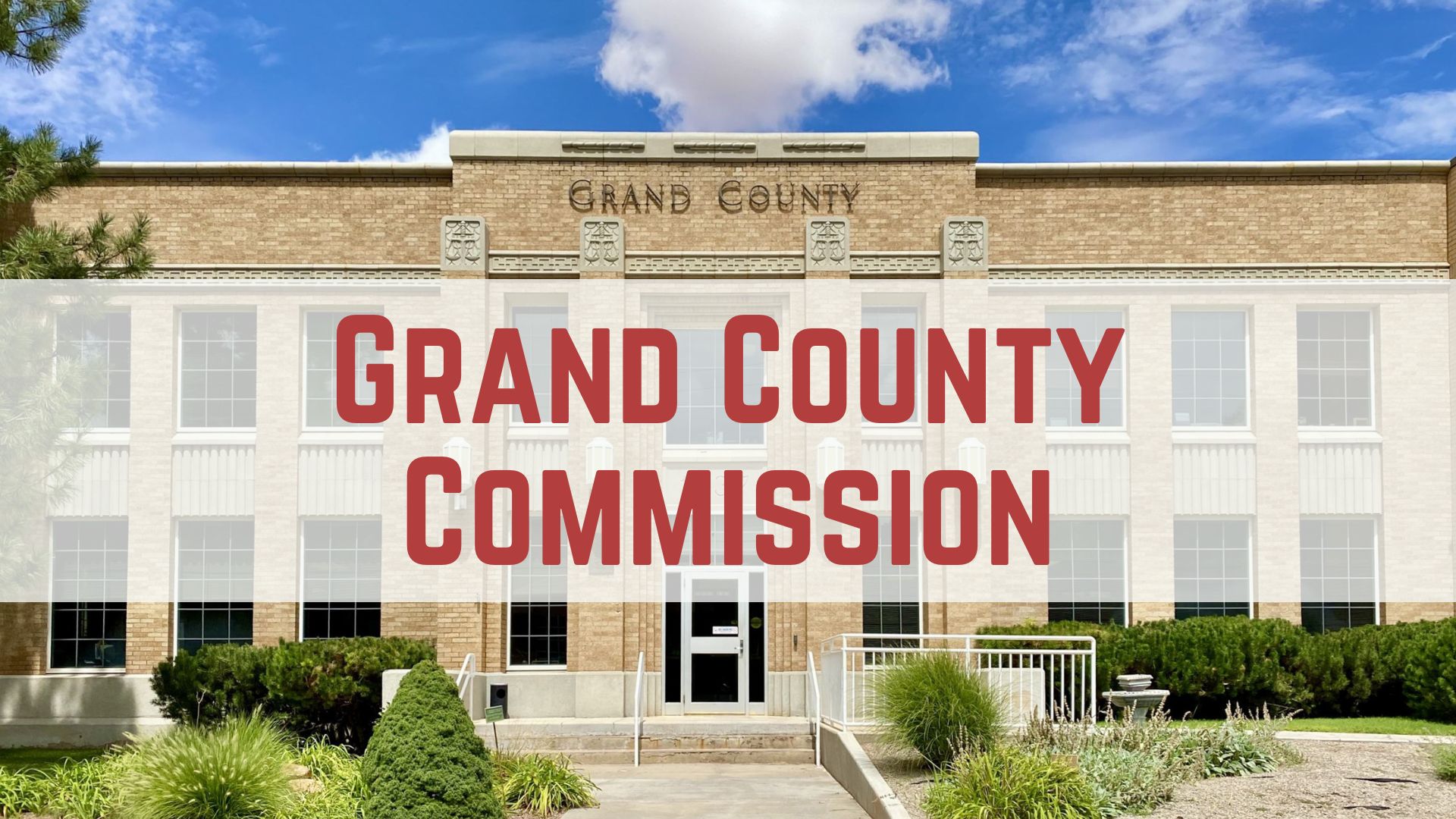Some information may be outdated.
Kiley Miller can see Bureau of Land Management (BLM) parcel No. 42 from the windows of her home she built south of Moab. The 1806-acre parcel sold for $25 an acre for a total of $45,175 at the BLM’s oil and gas lease sale held Feb. 19.
Parcel No. 42 was one of 26 parcels offered in the BLM’s Canyon Country District annual oil and lease gas sale held each February. All 26 parcels were purchased for a total of $4 million. The federal government will give 49 percent of the proceeds to the state of Utah. Utah will then divide the money between the Community Impact Board to fund projects and Grand and San Juan counties depending where the leased lands are located.
Miller began a protest regarding parcels No. 39 and No. 42 in August 2012. The two parcels are near her home in the Black Ridge area in the foothills of the La Sal Mountains. Miller was able to gather nearly 76,000 signatures protesting the oil and gas lease sale by Oct. 19, the final day for public comment regarding the BLM’s Sept. 21 environmental assessment of the parcels nominated for the sale.
“I feel pretty sad that despite the overwhelming public comment that the BLM went ahead and chose to sell it,” Miller said. “It is interesting that with over 75,000 public comments they didn’t defer it.”
Most of the parcels sold, including parcel No. 42, are in San Juan County.
Four of the 26 parcels sold were in Grand County: Nos. 15, 171, 174 and 240. Each of these parcels was bought by Harvey Mineral Partners based in Dallas, Texas. The company was paid $19,585 for the 8,513 acres of land occupied by the four leases.
Miller and her partner John Rzeczycki built their dream home together on property they bought from School and Institutional Trust Lands Administration (SITLA). She is concerned about the potential of oil and gas development that would increase traffic, as well as potentially pollute the air and groundwater.
“We are appealing their decision,” Miller said.
Parcel No. 39 near Miller’s home was deferred from the sale in September.
“Parcel No. 39 was removed from the lease sale because a small portion of it was in a Drinking Water Protection Zone,” said Katie Stevens, Moab BLM Field Office.
Land Professionals, Inc., of Afton, Wyo., which leased Parcel No. 42, must meet several stipulations before doing any exploration or development, said Lisa Bryant, assistant field manager at the Moab BLM Field Office.
“There are two standard stipulations that go on all parcel,” Bryant said. One is for air quality and the other is for threatened and endangered species.”
In addition, there were nine additional stipulations and eleven notices that alerts this company that there will be additional things the company needs to take into consideration in any kind of development. These considerations include air quality, public water reserves and critical water habitat.
“All stipulations notify the operator they need to comply with resource protection measures,” Bryant said. “Any ground disturbance would require an environmental assessment and public comment process.”
Don Ogaard, chief of the Utah BLM leasing support team, said most leases sold are not developed, however, once it is established the lease is ongoing.
“If sometime before 10 years is up they establish production, the lease is good as long as production is maintained,” Ogaard said.
Forty-eight parcels were originally nominated in July 2012 for the February 2013 oil and gas sale. Twenty-two parcels in Grand and San Juan counties were deferred during scheduled environmental assessments for a variety of reasons including potential threats to aquifers, archeological sites and resources and wildlife such as the Gunnison sage grouse.
Living Waters, a non-profit organization based in Moab, asked for the deferral of 24 of the 26 parcels sold.
In their protest dated Dec. 17, the organization specified the deferral of Parcel No. 42 “in consideration of the threat to residents of Kane Creek, Bridger Jack Mesa, and Brown’s Hole.”
“These homeowners have investments in infrastructure that provides clean drinking water. Other investments at risk include depreciation of property values,” stated the Living Water’s protest.
“These oil companies that were awarded parcels by the BLM (or SITLA for that matter), are going to frack. Just yesterday I saw frack equipment on trucks running up Highway 313,” said John Weisheit, conservation director for Living Waters. “People in the rural communities of Wyoming and Colorado are treating their drinking water with expensive water treatment devices. Our landscape is exceptional because the topography is already broken up and fractured. We have salt anticlines, igneous intrusive mountains, upwarps like the Uncompahgre, the Monument, and the San Rafael Swell.”
Weisheit expressed concern for the future.
“We are headed for trouble. Somebody is going to pay, and the 2005 Energy Policy Act says it will be you and me, and not the corporations,” Weisheit said.
Canyonlands Watershed Council also asked for the deferral of parcel No. 42 as one of five parcels that remained on the sale list is near populated areas.
Laurel Hagen, executive director of the Canyonlands Watershed Council, cited concerns about the potential of hydraulic fracturing practices that are now being used to extract natural gas.
“Hydraulic fracturing practices, which significantly increase the threat of groundwater contamination, have become very common in the last decade,” wrote Hagen. “In recent public statements, officials from the Utah Division of Oil, Gas and Mining indicated that hydraulic fracturing was not a problem in Utah in great part because it so rarely took place near populated areas.”
Three of the parcels are in what is known as the Dolores Triangle, an area of land that is bordered by the Colorado and Dolores rivers and the Utah/ Colorado stateline. The fourth parcel is near the Dolores Triangle, but northwest of the Colorado River.
Rio Mesa Center, a University of Utah research center, protested the sale of parcels No. 171 and 174, which are adjacent to each other in the Dolores Triangle. The center is approximately five miles south of the parcels.
The center’s protest specified that oil and gas operations were compromise “a study evaluating dust provenance using isotopic composition of plant wax biomarkers.”
The protest also stated that the Rio Mesa Center wasn’t invited to participate in the scoping process or BLM’s decision making process, nor was the University of Utah provided sufficient notice of the sale.
Living Waters also protested the lease of 171 and 174, due to the proximity to the Dolores River and the research center.
Appreciate the coverage? Help keep local news alive.
Chip in to support the Moab Sun News.





